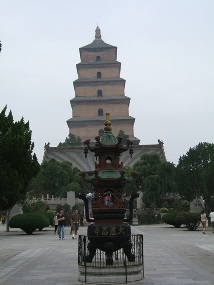Xi'an - home of the terracotta warriors
- The city walls
- Da yan (big wild goose) pagoda
- The imperial bath houses at Huaqing
- The terracotta army
Xi'an, meaning "Western Peace", is historically one of the most important cities in China and certainly has one of the longest histories. Called Chang'an (meaning "Perpetual Peace") in ancient times, Xi'an is one of the birthplaces of the ancient civilization in the Yellow River Basin area of the country. During Xian's 3,100 year development, 13 dynasties such as Zhou, Qin, Han and Tang placed their capitals here. Xi'an is considered to have equal fame with Athens, Cairo, and Rome as one of the four major ancient civilization capitals.
The cultural and historical significance of the area, as well as the abundant relics and sites, have earned Xi'an the laudatory title of "Natural History Museum" and the Shaanxi Province Museum contains a large number of very important relics (such as the earliest intact specimens of paper). The Museum of Terra Cotta Warriors and Horses is sometimes praised as "the eighth major miracle of the world", and the City Wall of the Ming Dynasty is the largest and most intact Ming Dynasty castle in the world.
The city walls
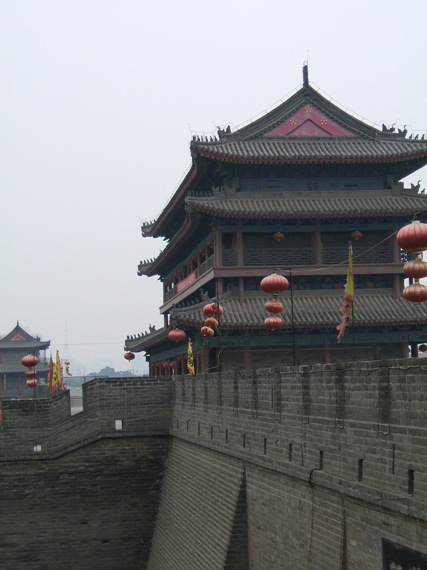
The present city wall was built around 1370 AD during the Ming Dynasty. It measure 11.9 km in circumference, 12 m in height, and 15-18 m in thickness at the base. It is the largest intact Ming dynasty fortification in the world.
back to top
Da yan (big wild goose) pagoda
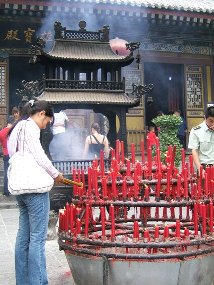
The Big Wild Goose Pagoda was constructed in 701 AD to house the Buddhist scriptures brought back from India by the Chinese monk Xuan Zang, (well-known as Tang Sanzang in China). It stands at 60 meters high and seven storeys tall. Today the pagoda is the symbol of Xi'an City and the city government's logo. In Buddhist culture the Goose is regarded as a 'good omen carrier' and symbol of good fortune.
The Big Wild Goose Pagoda is not just a historical building, it is an important and functional temple. Here we see Buddhists lighting bundles of incense sticks which are placed at the front of the temple (in the black ornate looking structure in the background). Thick clouds of beautifully perfumed smoke surround the temple.
back to top
The imperial bath houses at Huaqing
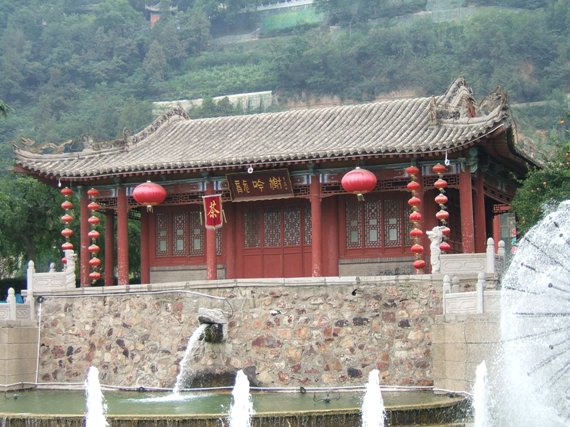
The poet Bai Juyi wrote of the Emperors' concubine (in his Song of Everlasting Sorrows) that "She bathed in the glassy water of warm-fountain pool which laved and smoothed her creamy skin when spring was cool." The bath houses later became a monastery and Chiang Kai-shek (the leader of the Nationalist party) was captured here. The old buildings were destroyed but have been re-created.
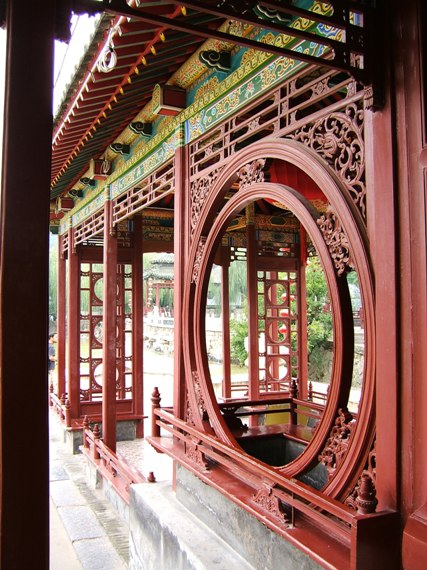
Ornately carved buildings at the Imperial bath houses and gardens in Huaqing (near Xi'an). The bath houses and gardens are by a hot spring on the slope of Mount Li. It was built during the T'ang Dynasty for the emperor and his favourite concubine.
back to top
The terracotta army
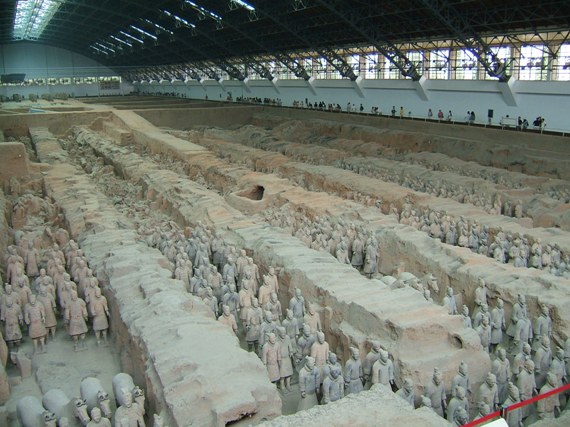
Upon ascending the throne of the Qin kingdom at the age of 13 (in 246 BC) Qin Shi Huang went on to become one of the most famous men in Chinese history. He conquered and united mainland China and became its 1st Emperor. He also standardised weights and measures, Chinese script (which is still the form used today) and built the Great Wall. The Terracotta army are part of his incredible mausoleum, which took 11 years to complete.
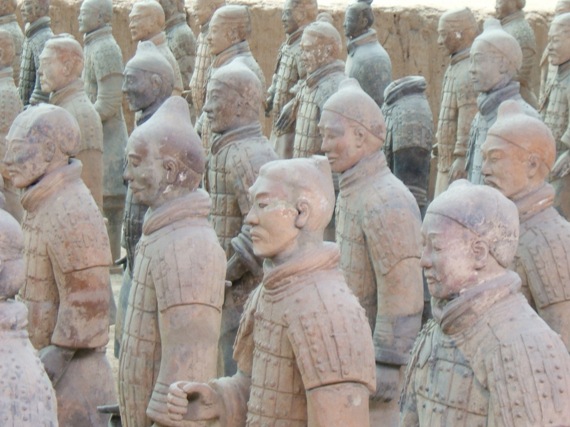
The Terracotta Army is a collection of 8,099 life-size terra cotta figures of warriors and horses. The figures were discovered in 1974 near Xi'an (Shaanxi province). It was not uncommon in Mausoleums of the time to be buried with miniature clay replica servants, what is unusual about these is that the warriors are all approx. 6ft tall! Each is unique and has different facial features thought to have been modeled on real soldiers of the time. The poses and hairstyles of the warriors allow them to be identified by rank and occupation (infantry, cavalry etc). This picture is infantrymen.
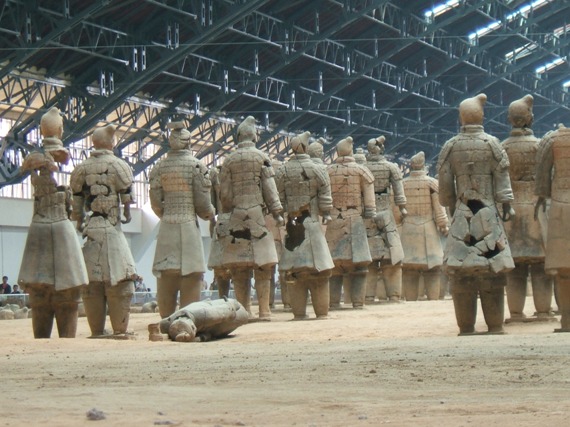
Qin Shi Huang had the figures created and buried with him in the belief that they would protect him after his death. The figures were buried in battle formation in many vaults, 1.5 kilometers east of his tomb, which is 33 km east of Xi'an. The army was built facing enemy territory, and in between these enemies and the Emperor's tomb. The full number of figures is unknown and only a small fraction of the total have been excavated and restored. This picture shows some of the warriors currently being restored. The reconstruction work is painstaking and some figures are smashed into tiny pieces. About 50 years after the tomb was built it was set aflame in a peasant uprising. The wooden support beams of the tomb's roof collapsed crushing many of the figures.
back to top
Just for fun
A little peek into the lighter side of life within the Heriot-Watt Waves & Fields group.
Word of the Week:
Gallivanting
Or:
